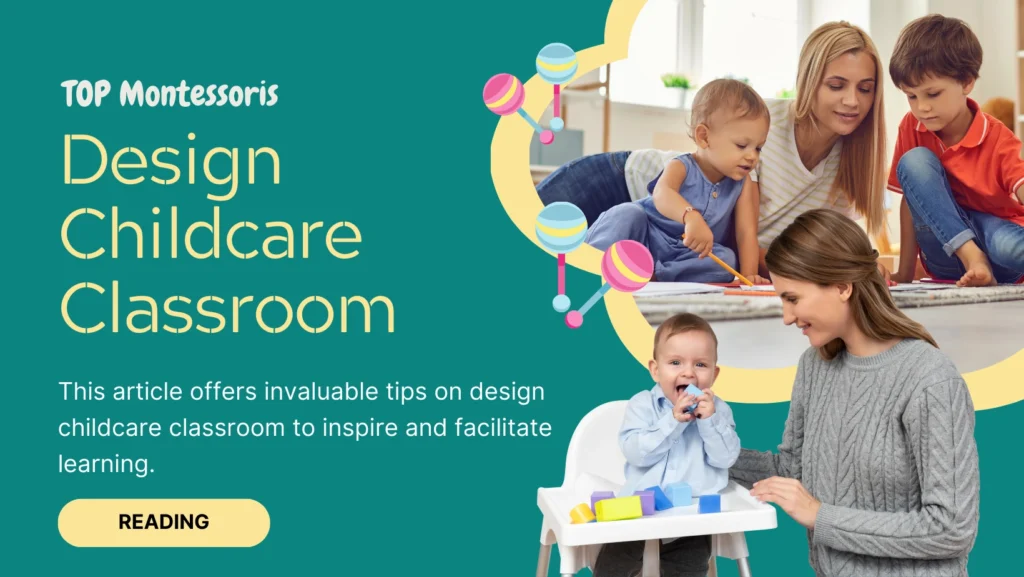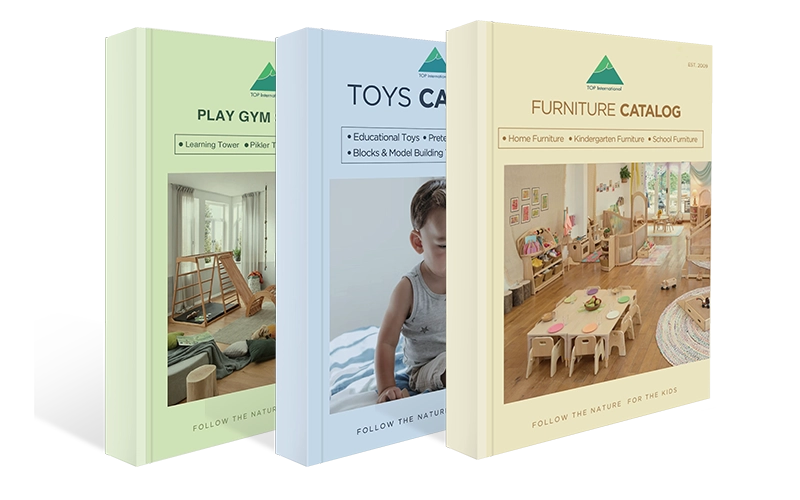In an era where education shapes our children’s future, design childcare classroom becomes pivotal for educators, parents, and all stakeholders in early childhood education. Are you keen on crafting a space that transcends traditional learning environments to inspire, nurture, and stimulate young minds? Imagine a classroom that, upon entry, sparks a sense of wonder, creativity, and an innate desire to learn and explore. How can we achieve an inspiring setting that effectively combines aesthetic appeal with practical functionality, catering to our young children’s diverse needs?
The quest to design childcare classroom extends beyond the visual appeal of vibrant colors and whimsical furniture. It’s a thoughtful integration of design principles, educational psychology, and a deep understanding of child development. This approach aims to create a nurturing environment that promotes curiosity, fosters a sense of safety, and supports children’s educational journey. From incorporating flexible seating options to ensuring abundant natural light, every detail is crucial in crafting a space where children can flourish, educators can thrive, and a community can grow together.
This endeavor is significant for a wide array of individuals – from the devoted parents eager to give their children the best start in life, the innovative teachers and principals looking to revolutionize early education, and the dedicated education workers striving to make a difference. By focusing on the environment where young minds spend a considerable part of their day, we can influence their learning path positively. Let’s delve into these 8 powerful tips, guided by a collective aim to design childcare classroom spaces that are not just places of learning but sources of inspiration for everyone involved.
The Importance of Design Childcare Classroom
Design childcare classroom that resonates with the vibrancy and curiosity of early childhood is not just an art; it’s a science that profoundly influences the developmental milestones of young learners. As the cornerstone of early childhood education, the environment in which children spend their formative years can significantly impact their cognitive, emotional, and social development. In an era where education continually evolves, the physical space of a design childcare classroom must go beyond functionality to inspire, engage, and support every child’s unique journey of discovery and learning.
1. Creating a Welcoming and Inclusive Classroom Environment
Creating a welcoming and inclusive environment is paramount in a childcare setting. It nurtures young learners’ sense of safety, belonging, and curiosity. The strategic use of natural light, color, and visuals plays a significant role in achieving this atmosphere.
Utilizing Natural Light and Color
Bright, airy spaces filled with natural light and thoughtfully chosen colors can significantly impact mood and energy levels in a childcare setting. Light blues and greens promote calmness and concentration, while warm yellows spark energy and creativity.
Elements such as skylights or solar tubes can also introduce more natural light into areas that windows might not reach. Design childcare classroom layouts to ensure that activity and play areas benefit from maximum daylight exposure, encourage active engagement and balance energy levels throughout the day.
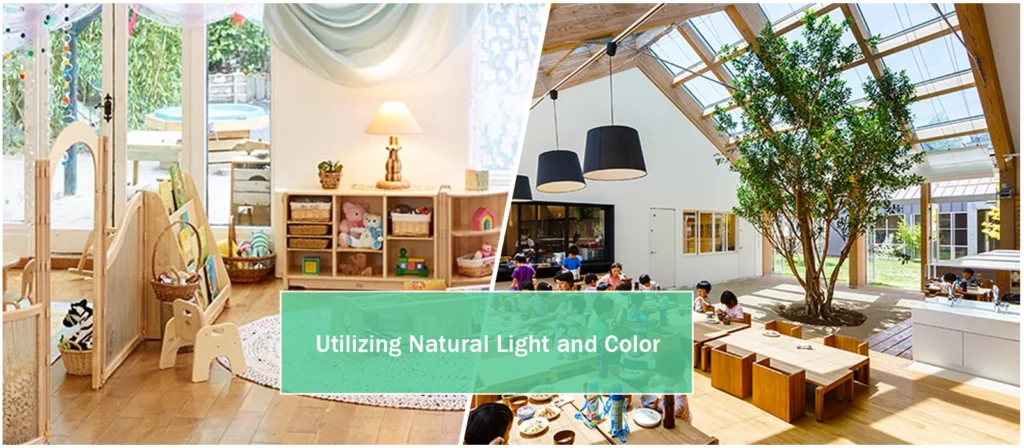
Stimulating Learning with Colors and Visuals
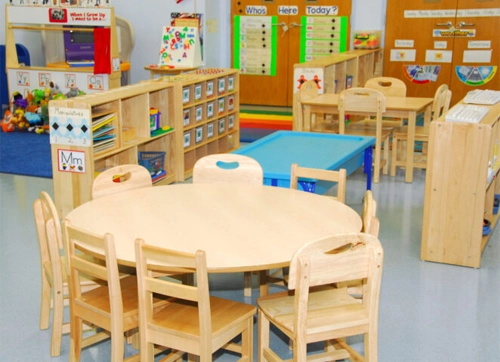
The Impact of Color on Children
Color significantly affects emotions and behavior, making it a powerful tool for design childcare classrooms. Different colors can stimulate learning, encourage creativity, or provide calmness and comfort. Understanding the psychological impact of colors is crucial in creating a childcare environment that supports various activities and emotional states.
Implementing Color Theory
- Calming Blues and Greens: Ideal for quiet areas designed for reading or rest, these colors promote calmness and focus.
- Energizing Yellows and Oranges: Perfect for play areas, these warm colors stimulate happiness, creativity, and social interaction.
- Neutral Tones: Neutral tones provide a backdrop for colorful educational materials and children’s artwork and ensure the space is not overwhelming.
2. Designated Spaces for Varied Learning Activities
Creating distinct areas within a design childcare classroom for various activities is essential for nurturing a dynamic learning environment. Each designated space is thoughtfully designed to cater to different aspects of child development, from cognitive growth to physical coordination and emotional expression.
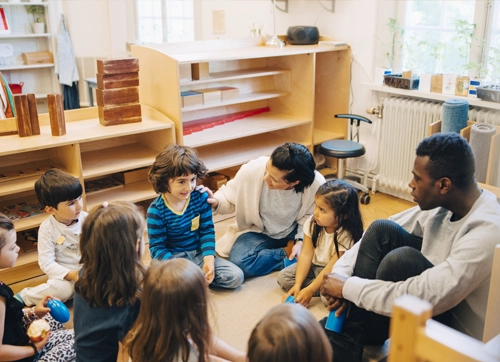
Learning Area
This central hub has diverse educational materials, including puzzles, blocks, and interactive games. It encourages cognitive development through hands-on exploration and problem-solving. The layout is flexible, allowing for individual or group activities and fostering independence and collaboration.
Reading Nooks
A cozy, inviting corner filled with a wide range of books opens up a world of imagination and knowledge. Soft seating, like bean bags and floor cushions, makes this space welcoming, encouraging children to linger and explore stories. This area supports literacy development and provides a quiet retreat for children needing downtime.
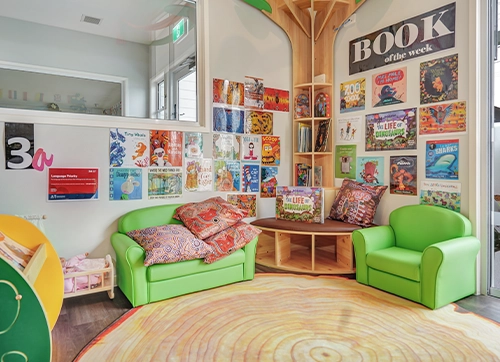
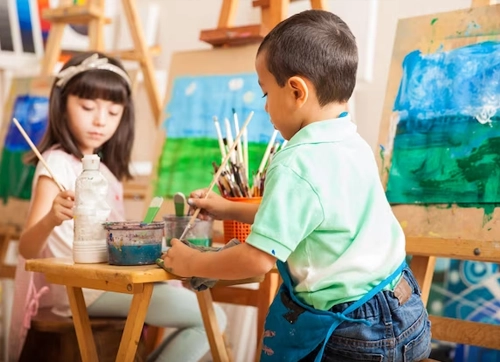
Drawing Area
Art is a universal language of expression. A dedicated drawing area stocked with crayons, markers, paper, and paint invites spontaneous artistic creation. Displaying the children’s artwork celebrates their creativity and encourages a positive self-image.
Role Play Area
Multisensory areas are crafted to stimulate sight, sound, touch, smell, and sometimes taste, providing a rich tapestry of experiences. Sensory bins, tactile boards, and interactive sound stations support diverse learning styles and needs, which is particularly beneficial for children with special educational needs.

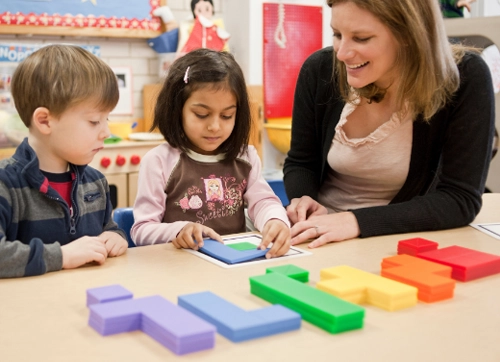
Multisensory Experience Areas
A space designed for dress-up and role-playing nurtures social-emotional skills such as empathy, cooperation, and communication. Furnished with costumes, props, and thematic sets, it allows children to explore various roles and scenarios, broadening their understanding of the world.
Outdoor Play Area
An extension of the indoor learning environment, the outdoor play area offers endless opportunities for exploration, adventure, and learning about the natural world. Whether it’s a garden, playground, or a simple open space with natural elements, outdoor play enhances physical skills, creativity, and environmental awareness.

3. Selecting Specific Furniture for a Design Childcare Classroom
In designing an enriching design childcare classroom, the selection of furniture plays a crucial role in creating a safe, functional, and inviting space for young learners. Each piece of furniture should be chosen with the child’s size, safety, and the classroom’s overall educational goals in mind. Here are examples of specific furniture types that can significantly enhance a childcare environment:
Tables and Chairs
- Adjustable Tables: Tables with adjustable heights are ideal to accommodate children as they grow, ensuring that the work surface is always at an appropriate height. These tables can be used for various activities, from art projects to snack time.
- Stackable Chairs: Stackable chairs are great for space-saving and can be easily set aside to create open areas for group activities. Chairs with rounded edges and sturdy construction ensure safety and durability.
Storage Solutions
- Open Shelving Units: Open shelves at child height allow children to easily access and return toys, books, and materials, fostering independence and organizational skills. Clear labeling of shelves with pictures and words can further enhance self-guided learning and responsibility.
- Cubbies for Personal Items: Individual cubbies or lockers provide children with a personal space to store their belongings, such as backpacks, lunch boxes, and jackets. This helps in teaching personal responsibility and keeping the classroom organized.

Incorporating these types of furniture into a design childcare classroom not only supports the developmental needs of children but also enhances the functionality and aesthetics of the learning space. Choosing furniture that is durable, easy to clean, and aligned with the educational philosophy of the childcare will create an environment where children can learn, play, and grow in safety and comfort.
4. Flexible Seating Options
Enhancing Learning through Movement
Flexible seating is a pivotal component in the design childcare classroom, offering a variety of seating options that cater to the diverse needs and preferences of children throughout their day. This innovative approach is central to creating environments that respect and respond to individual learning styles, allowing children some control over their surroundings, including their seating choices. By incorporating elements like bean bags, cushions, wobble chairs, and standing desks into the design childcare classroom, educators encourage movement and give children the freedom to choose the most comfortable positions. This, in turn, significantly enhances their focus and engagement, underlining the importance of thoughtful, child-centric design in early childhood education settings.

Promoting Interaction and Collaboration
Beyond individual comfort, flexible seating fosters community and collaboration within the design childcare classroom. By removing the rigidity of assigned seating, children are encouraged to share spaces and work together, developing social skills and learning to negotiate shared resources. This dynamic setup can be reconfigured for group projects, circle time, or individual work, offering teachers versatility in orchestrating various learning experiences.
Encouraging Choice and Autonomy
Empowering children with choices about where they sit in the design childcare classroom instills a sense of responsibility and autonomy, nurturing their decision-making skills. This aspect of classroom design allows them to listen to their bodies’ needs—whether choosing a quiet corner for reading or a group table for collaborative projects—thereby fostering self-awareness and independence. Such autonomy in selecting their learning space within the carefully designed childcare environment can lead to increased motivation and a sense of ownership over their learning process.

5. Organizing Classroom Materials for Easy Access and Exploration
A well-organized design childcare classroom not only facilitates a smoother daily operation but also significantly enhances the learning experience for young children. Children can make choices, explore independently, and engage in self-directed learning when materials are organized and within easy reach. This empowerment is critical in early childhood education, fostering curiosity, decision-making skills, and a sense of autonomy.
Strategies for Effective Organization
- Transparent Bins and Labels: Use clear storage bins and containers labeled with both pictures and words. This visual approach helps children identify and return materials independently, supporting literacy skills and organizational habits.
- Accessible Bookshelves: Position bookshelves at child height, organizing books by theme, author, or reading level. Forward-facing displays can entice children to pick up a book, fostering a love for reading from a young age.
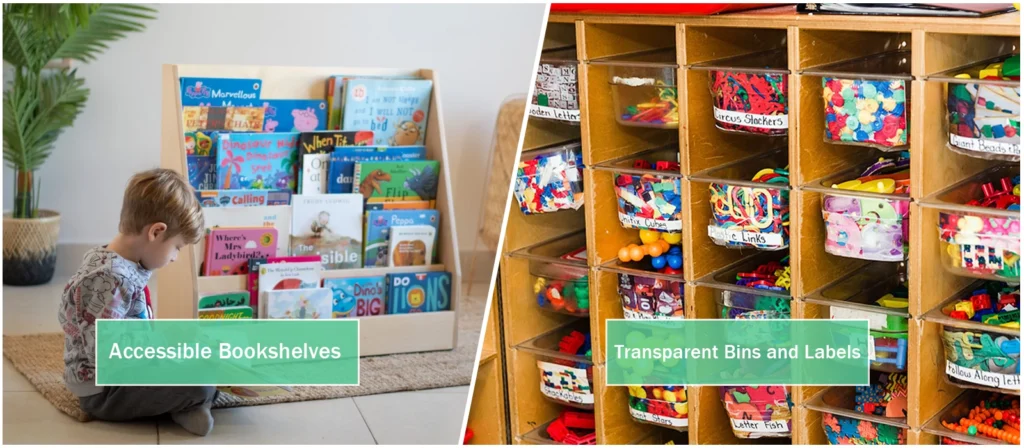
Personalizing the Space with Student Artwork and Displays
Incorporating student artwork and project displays into the classroom environment serves multiple purposes. It personalizes the space, making it feel welcoming and familiar to the children who spend significant parts of their day there. More importantly, it provides a sense of pride and accomplishment, showcasing their work to peers, teachers, and visiting family members.
6. Integrating Technology and Digital Tools
In the digital age, technology is ubiquitous in children’s lives, offering unique opportunities for enhancing learning in childcare environments. The thoughtful integration of digital tools can stimulate engagement, facilitate access to vast information, and support diverse learning styles.
Selecting Appropriate Digital Tools
- Educational Apps and Software: Choose age-appropriate applications aligned with educational goals. Look for tools that promote problem-solving, creativity, and critical thinking.
- Interactive Whiteboards: These can transform lessons into interactive experiences, catering to visual, auditory, and kinesthetic learners by incorporating multimedia elements into teaching.
Establishing Guidelines for Technology Use
- Creating a Technology Schedule: Incorporate technology into the daily routine without letting it dominate. Set specific times for digital learning to ensure a healthy balance between physical play, social interaction, and traditional learning activities.
- Promoting Active Engagement: Use technology as a tool for active participation rather than passive consumption. Encourage activities that require interaction, collaboration, or creation, ensuring children remain engaged and enthusiastic learners.
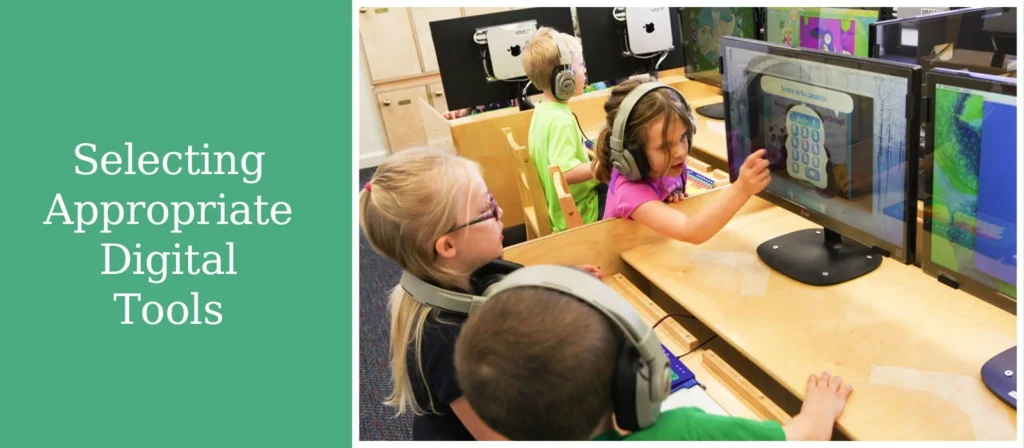
7. Involving Parents and Caregivers
The involvement of parents and caregivers in the childcare experience strengthens the bond between home and school, offering a more cohesive and supportive environment for children’s development. Active participation from families can enhance the educational journey, providing children with a sense of continuity and security.
Strategies for Engaging Families
- Regular Communication: Utilize newsletters, emails, and parent-teacher apps to keep families informed and involved in their children’s progress and classroom events.
- Family Events and Workshops: Host events that invite families into the classroom, such as open houses, art shows, or educational workshops. These occasions allow parents to engage with the learning environment and participate actively in their children’s education.
- Volunteer Opportunities: Encourage parents to contribute their time or skills to the classroom, whether through reading sessions, sharing cultural traditions, or assisting with class projects.
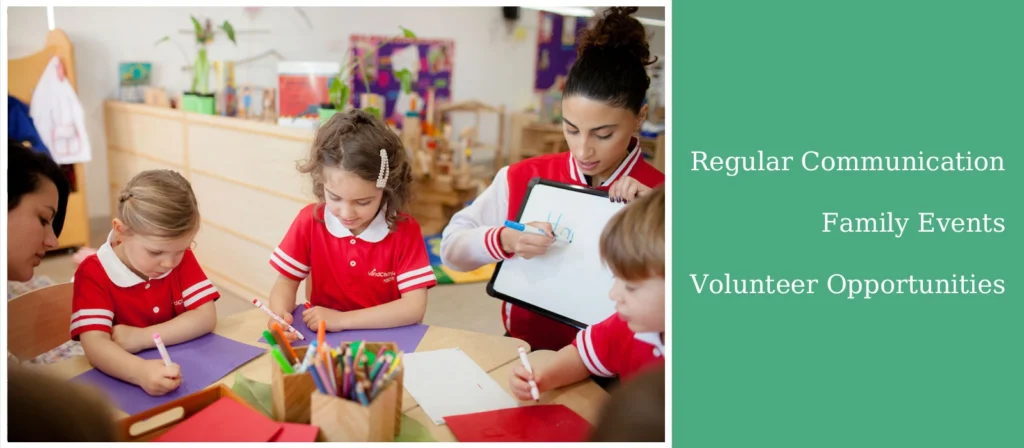
8. Prioritizing Safety
Safety is the cornerstone of any effective design childcare classroom environment. Ensuring every child is safe and secure within the classroom allows for a setting where learning and exploration can thrive without risk.
Implementing Comprehensive Safety Measures
- Safe Furniture and Equipment: Ensure all furniture and play equipment meet safety standards with secure anchoring and non-toxic materials.
- Regular Safety Audits: Conduct routine checks to identify and mitigate potential hazards, from sharp corners to small, swallowable parts.
- Emergency Preparedness: Have clear, practiced emergency protocols, including evacuations, lockdowns, and first aid responses. Staff should be well-trained, and emergency contacts and procedures should be easily accessible.
Creating a Culture of Safety
- Educating Children on Safety Practices: Incorporate safety education into daily routines, teaching children about personal space, proper use of materials, and emergency procedures in an age-appropriate manner.
- Engaging with Local Safety Resources: Partner with local health and safety organizations to provide resources and training for staff and families, reinforcing the community’s role in supporting the childcare’s safety culture.

By addressing these crucial areas, childcare environments can foster a balanced integration of technology, strong partnerships with families, and a steadfast commitment to safety. Each element is vital in creating a nurturing, dynamic, and secure setting for children to learn, grow, and thrive.
A Showcase of Well Design Childcare Classroom
In our commitment to enhancing early childhood education through innovative design, we’ve had the honor of collaborating with various childcare centers around the globe. Each project presented an opportunity to tailor our designs to the physical space and the educational philosophy it embraced. From Montessori to Reggio Emilia, our designs have supported and enriched these pedagogies, creating environments that foster exploration, independence, and learning. Here, we delve into a selection of our projects, illustrating the impact of thoughtful design on early education across different cultures.
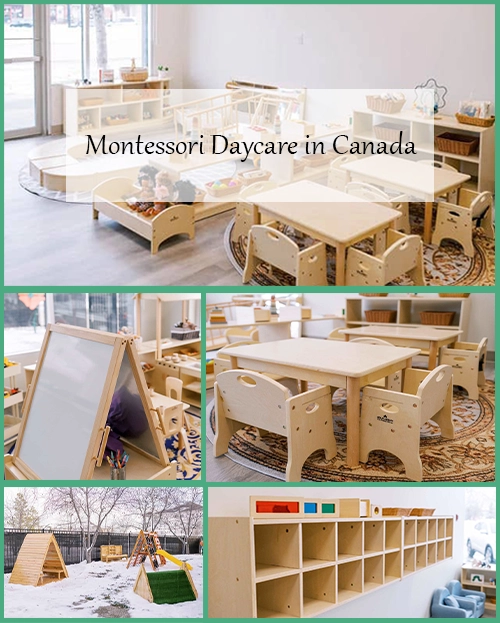
Montessori Childcare in Canada
In Canada, our design Montessori childcare has focused on creating serene, orderly spaces that encourage self-directed learning and a deep connection with nature. Utilizing natural materials, neutral colors, and carefully organized learning materials, these classrooms allow children to explore their interests in a calm and inviting environment. The feedback from our Canadian clients highlights an increased sense of independence and engagement among students, a testament to the Montessori philosophy’s successful integration into our designs.
Reggio Childcare in Australia
Our work with Reggio Emilia childcare in Australia has allowed us to create spaces that reflect the Reggio philosophy’s emphasis on expressive arts and community. Bright, airy classrooms with dedicated areas for creative exploration — from art studios to construction zones — invite children to express their ideas and collaborate with peers. Australian educators have noted a significant enhancement in creativity and problem-solving skills, underscoring the effectiveness of environments encouraging curiosity and open-ended learning.
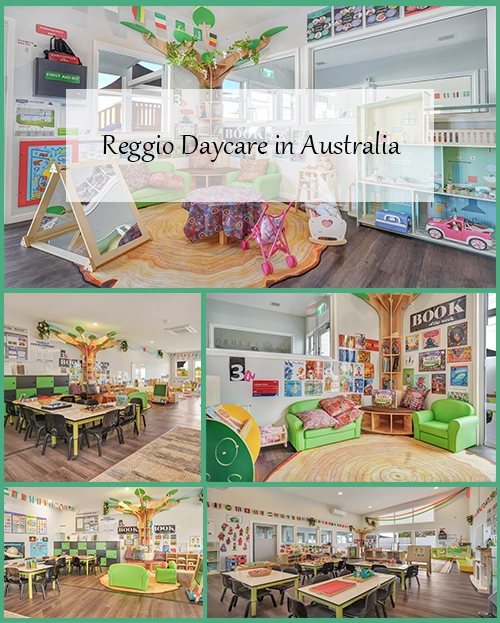

Montessori Childcare in New Zealand
New Zealand’s design childcare classroom has focused on fostering a Montessori environment of respect, exploration, and environmental stewardship. Classrooms are equipped with materials that empower children to learn through discovery and manipulation, arranged in an accessible manner that respects their autonomy. Incorporating outdoor learning spaces further emphasizes the Montessori commitment to connecting with the natural world, with client feedback highlighting the positive impact on children’s awareness and appreciation of their environment.
Kindergarten Clients in Saudi Arabia
We design childcare classroom for clients in Saudi Arabia, and we have struck a balance between honoring traditional values and embracing innovation. Our design childcare classroom seamlessly integrates technology, supporting modern learning methods while maintaining a warm, welcoming atmosphere that respects cultural norms. This approach has opened new avenues for learning and interaction, with Saudi educators reporting enhanced student engagement and a keen interest in digital literacy alongside traditional learning.
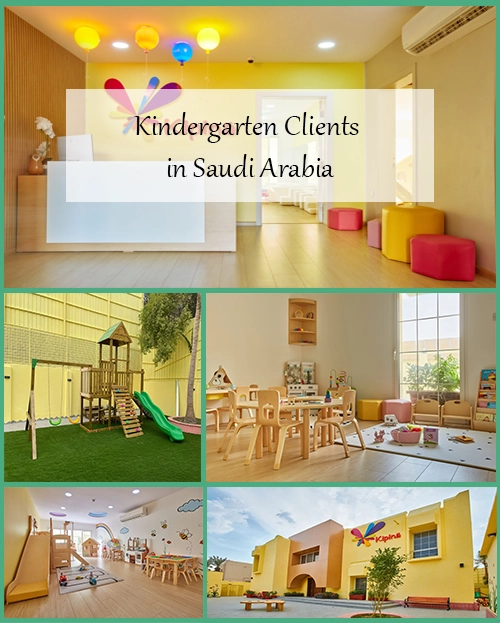
These examples from across the world showcase our dedication to creating visually appealing design childcare classroom that are aligned with each center’s educational approach and cultural context. By integrating the principles of renowned educational philosophies with our innovative design strategies, we’ve helped shape spaces that inspire, support, and transform early learning experiences for children around the globe.
Implementing Your Design: A Step-by-Step Guide
Bringing your design childcare classroom from concept to reality involves strategic planning and execution. Follow these steps to ensure a successful transformation:
- Define Your Vision: Start understanding your educational philosophy and how you want the space to feel and function. This vision will guide all design decisions.
- Engage Stakeholders: Involve teachers, parents, and even the children in the planning process. Gathering input from those using the space ensures the design meets their needs and expectations.
- Plan Your Layout: Consider the flow of the space, including traffic patterns and activity zones. Ensure a balance between open areas for group activities and quiet corners for individual exploration.
- Select Furniture and Materials: Choose age-appropriate, safe, and durable furniture. Look for flexible, multi-use items that adapt to changing needs and activities.
- Incorporate Educational Tools: Decide on the educational materials and technology to enhance learning. Remember to balance digital tools with tactile, hands-on resources.
- Decorate with Purpose: Use colors, artwork, and displays to create an inviting and stimulating environment. Remember to leave space for children’s work to personalize the classroom.
- Implement Safety Measures: Ensure all elements of the design childcare classroom prioritize safety, from non-toxic materials to secure storage and emergency preparedness.
- Review and Revise: Once the design is implemented, observe how the space is used. Be prepared to make adjustments to optimize functionality and engagement.
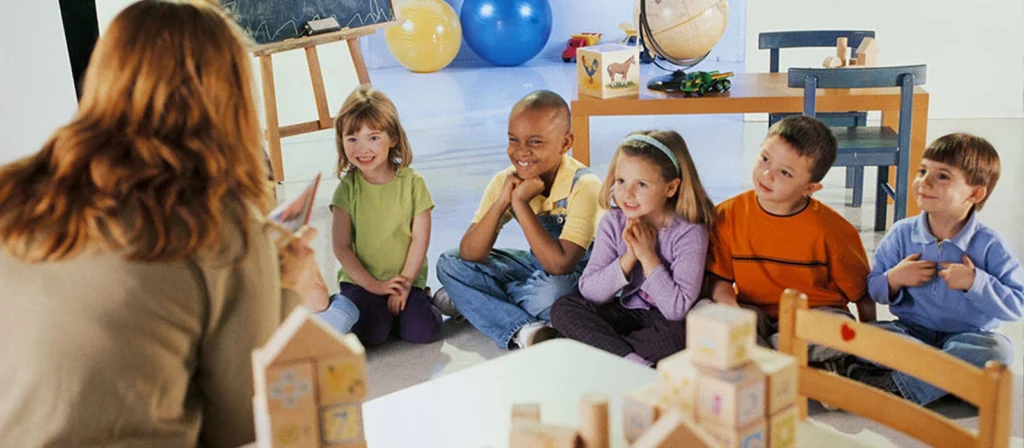
Conclusion
Design childcare classroom that both inspire and support learning is an art that significantly influences the early developmental journey of children. By applying these 8 powerful tips, educators, parents, and caregivers can craft enriching spaces that nurture curiosity, creativity, and a sense of belonging. Such environments bolster academic growth and cater to young learners’ emotional and social well-being, laying a solid foundation for their future. In this endeavor, every thoughtful detail contributes to a setting where children feel valued and empowered to explore the vast landscape of knowledge and discovery.

